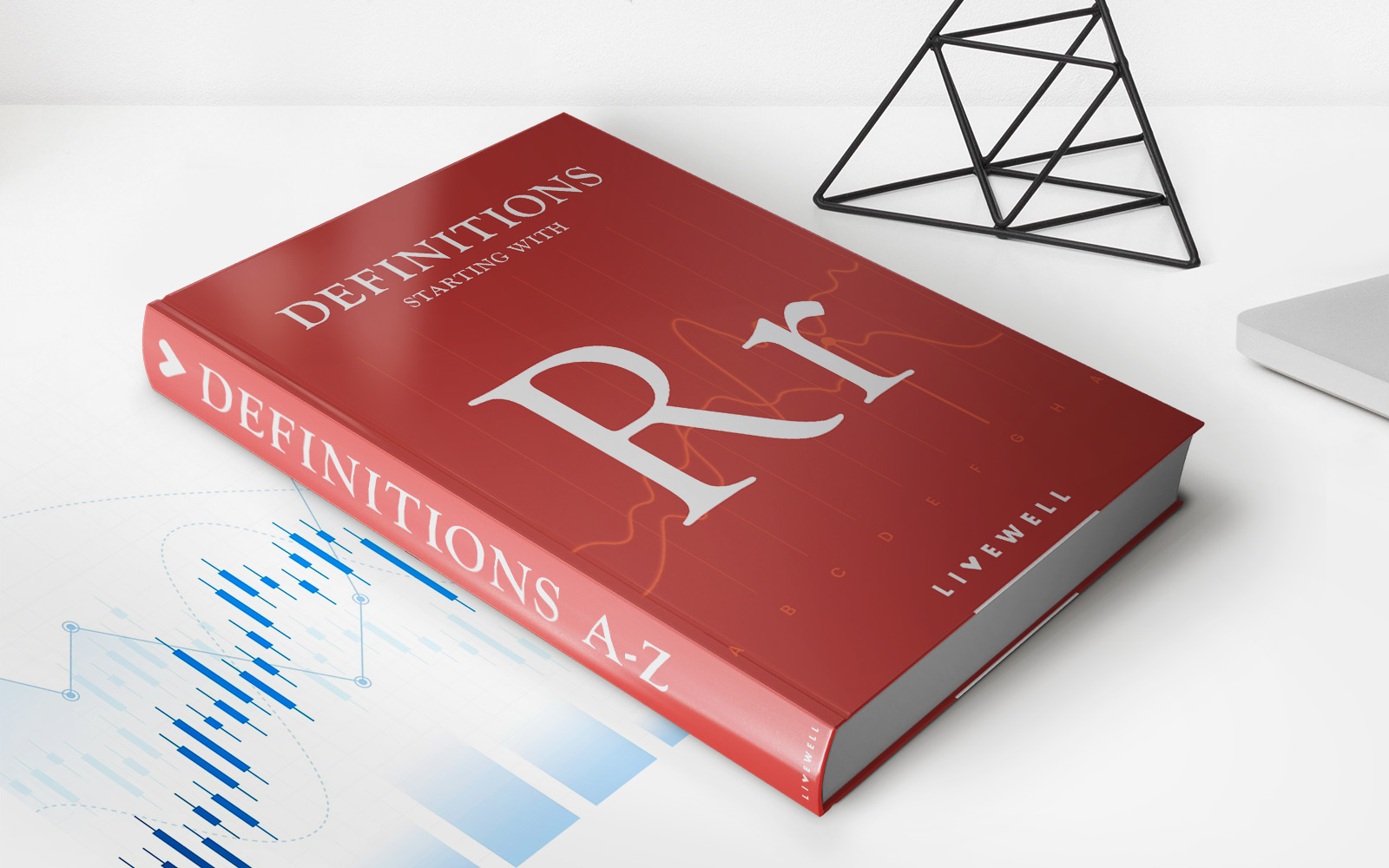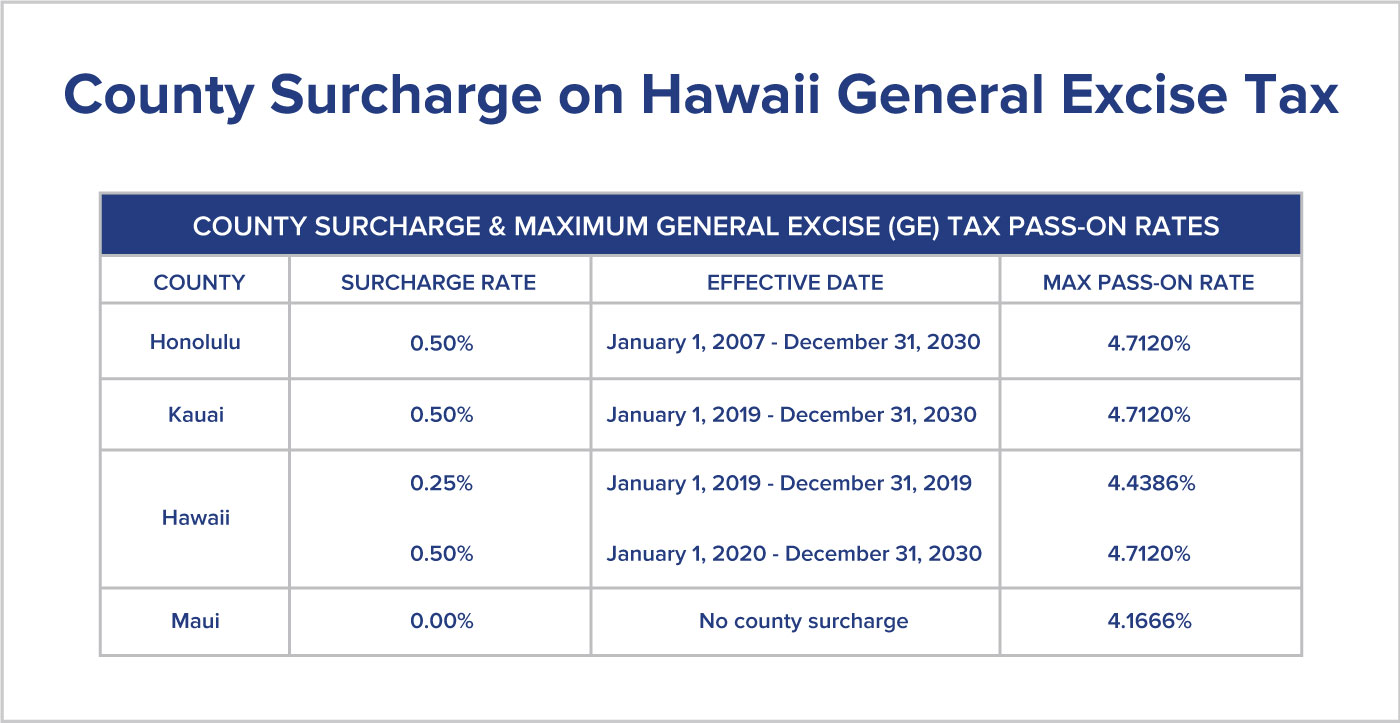

Finance
What Does BOR Mean In Insurance?
Modified: February 21, 2024
Find out what BOR means in insurance and how it impacts your finances. Gain insight into this important aspect of the insurance industry.
(Many of the links in this article redirect to a specific reviewed product. Your purchase of these products through affiliate links helps to generate commission for LiveWell, at no extra cost. Learn more)
Table of Contents
- Overview of BOR in Insurance
- Definition of BOR in Insurance
- Purpose and Importance of BOR in Insurance
- BOR Clauses and Provisions
- BOR Process and Implementation
- BOR vs. Non-BOR Insurance Policies
- Benefits and Limitations of BOR in Insurance
- Examples of BOR in Insurance Claims
- BOR in Different Types of Insurance Policies
- Conclusion
Overview of BOR in Insurance
When it comes to insurance policies, understanding the terms and conditions can be overwhelming. One important term that often comes up is “BOR,” which stands for “Binding of Reinsurance.” BOR plays a crucial role in the insurance industry, ensuring that insurance companies can manage their risks effectively and provide coverage to their policyholders.
At its core, BOR refers to the process of transferring a portion of the risk assumed by an insurance company to another insurer, known as the reinsurer. This transfer of risk helps to mitigate the financial burden and potential losses faced by the primary insurer.
Insurance companies utilize BOR to protect themselves from large and unexpected claims that could potentially harm their financial stability. By transferring a portion of the risk to a reinsurer, the primary insurer can ensure that they have the necessary financial resources to pay out claims and maintain their obligations to policyholders.
While BOR is commonly associated with reinsurance, it can also be applicable to other types of insurance arrangements. For example, in some cases, an insurance company may bind multiple policies together under a single BOR arrangement.
BOR serves as a contractual agreement between the insurance company and the reinsurer, outlining the terms and conditions of the reinsurance coverage. These agreements are carefully drafted to ensure that both parties have a clear understanding of their respective roles and responsibilities.
It is important to note that BOR differs from traditional insurance policies in several ways. Instead of providing coverage directly to policyholders, the reinsurer only assumes a portion of the risk from the primary insurer. This distinction allows the primary insurer to manage their risk exposure more effectively and maintain their financial stability.
Overall, BOR is a critical component of the insurance industry that enables insurers to transfer a portion of their risk to reinsurers. By doing so, insurance companies can protect themselves from large and unexpected losses, ensuring that they can fulfill their obligations to policyholders. Understanding BOR is essential for both insurance professionals and policyholders, as it plays a significant role in the overall risk management and stability of the insurance market.
Definition of BOR in Insurance
Binding of Reinsurance (BOR) is a concept used in the insurance industry to describe the process of transferring a portion of the risk assumed by an insurance company to a reinsurer. Reinsurance is essentially insurance for insurance companies, enabling them to manage their risks and protect their financial stability.
In simple terms, BOR refers to an agreement between the primary insurer (ceding company) and the reinsurer, where the reinsurer assumes a portion of the risk associated with the insurance policies underwritten by the primary insurer.
Through BOR, the primary insurer is able to transfer a predefined percentage or specific lines of business to the reinsurer. This helps the primary insurer mitigate their exposure to potential losses and ensures they have the necessary financial backing to handle claims made by policyholders.
The BOR process typically involves the primary insurer providing detailed information about the policies, such as coverage limits, policy terms, and premiums, to the reinsurer. Based on this information, the reinsurer evaluates the risk and determines the terms and conditions for assuming a portion of the risk.
Once the agreement is in place, the reinsurer takes on the responsibility for paying a share of the claims that arise from the covered policies. This can include both individual claims and aggregate losses that exceed a certain threshold.
BOR is a contractual arrangement governed by legal agreements known as reinsurance treaties or contracts. These agreements outline the terms, responsibilities, and financial arrangements between the primary insurer and the reinsurer. They also specify the premium payments, commission structures, and any specific provisions for claims handling.
It’s important to note that BOR is different from facultative reinsurance, which involves the reinsurer evaluating and underwriting individual risks on a case-by-case basis. BOR, on the other hand, allows for a broader and more automatic transfer of risk.
In summary, BOR plays a vital role in the insurance industry by enabling insurance companies to transfer a portion of their risk to reinsurers. This transfer helps protect the primary insurer’s financial stability and ensures they can fulfill their obligations to policyholders in the event of significant claims or losses.
Purpose and Importance of BOR in Insurance
The purpose of Binding of Reinsurance (BOR) in insurance is to protect primary insurers from excessive risk exposure and provide them with the necessary financial stability to meet policyholder obligations. BOR plays a crucial role in the insurance industry by enabling insurers to effectively manage their risks and ensure their long-term viability.
One of the primary reasons for implementing BOR is to mitigate the financial impact of large and unexpected claims. Insurance companies often face the risk of catastrophic events or high-value claims that could potentially exhaust their financial resources. Through BOR, insurers can transfer a portion of these risks to reinsurers, who assume the responsibility for paying a share of claims.
The importance of BOR lies in its ability to provide financial stability to primary insurers. By sharing the risk with reinsurers, insurers can protect their balance sheets and ensure that they have sufficient funds to pay policyholder claims, maintain customer confidence, and continue operating their business.
BOR also allows insurers to underwrite high-value policies and cover risks that they may otherwise be unable or unwilling to bear alone. By transferring a portion of the risk to reinsurers, insurers can take on more substantial policies, expand their business, and offer more extensive coverage options to their policyholders.
Furthermore, BOR plays a vital role in fostering competition and innovation in the insurance industry. Insurers can operate in a more secure financial environment, allowing them to explore new markets, develop new products, and provide better services to their policyholders. The ability to transfer risk through BOR encourages insurers to take on more substantial risks and seek opportunities for growth and expansion.
For reinsurers, BOR provides an opportunity to diversify their risk portfolios and generate income through reinsurance premiums. Reinsurers specialize in assuming risks from multiple insurers, allowing them to spread their exposure across various lines of business and geographical regions. This diversification helps reinsurers manage their own risk and enhances their capacity to support insurance companies.
In summary, the purpose and importance of BOR in insurance are to provide primary insurers with financial stability, protect against excessive risk exposure, enable expansion and innovation, and foster competition in the industry. By transferring a portion of their risks to reinsurers, insurers can ensure their long-term viability, enhance their ability to meet policyholder obligations, and withstand potential catastrophic events or high-value claims.
BOR Clauses and Provisions
When implementing a Binding of Reinsurance (BOR) agreement, there are several clauses and provisions that are typically included to establish the terms and conditions of the reinsurance arrangement. These clauses ensure that both the primary insurer and the reinsurer have a clear understanding of their responsibilities and obligations. Let’s explore some of the common BOR clauses and provisions:
- Retention: This clause specifies the amount of risk that the primary insurer will retain before transferring it to the reinsurer. The retention can be defined as a percentage of the policy limit or a specific monetary value.
- Reinsurer’s Share: This provision outlines the percentage of the risk that the reinsurer will assume. It is often a predetermined amount agreed upon by both parties.
- Claims Handling: This clause establishes the procedures and responsibilities for handling claims made under the covered policies. It outlines how claims will be reported, assessed, and settled between the primary insurer and the reinsurer.
- Premiums and Commissions: This provision details the payment of premiums by the primary insurer to the reinsurer. It specifies the timing and frequency of premium payments, as well as any commissions or fees payable to brokers or intermediaries involved in the arrangement.
- Termination: This clause defines the circumstances under which either party can terminate the BOR agreement. It outlines the notice period required and any potential penalties or obligations upon termination.
- Reinstatement: Some BOR agreements include a reinstatement provision, which allows the primary insurer to restore the reinsured coverage after a claim or a specified event. This provision enables insurers to maintain the level of coverage and risk transfer in the event of losses.
- Aggregate Limit: This provision sets a cap on the total amount of liability that the reinsurer will assume for a specific period or across multiple claims. It ensures that the reinsurer’s exposure to losses is limited.
- Follow the Settlements: This clause requires the reinsurer to honor the claims settlements made by the primary insurer. In other words, the reinsurer agrees to accept the primary insurer’s decisions regarding claim settlements and pays its share accordingly.
These are just a few examples of the common clauses and provisions found in BOR agreements. The specific terms and conditions will vary depending on factors such as the nature of the insurance policies and the negotiated agreement between the primary insurer and the reinsurer.
It is essential for both parties to carefully review and understand the BOR clauses and provisions to ensure that the agreement aligns with their risk management goals and objectives. Consulting legal and reinsurance professionals can be beneficial in drafting and negotiating these agreements to protect the interests of all parties involved.
BOR Process and Implementation
The process of implementing a Binding of Reinsurance (BOR) agreement involves several steps and considerations to ensure a smooth and effective transfer of risk from the primary insurer to the reinsurer. Let’s explore the general BOR process and its implementation:
1. Risk Assessment and Evaluation: The primary insurer assesses the risks associated with its insurance portfolio and identifies the portion or specific lines of business it wishes to transfer to the reinsurer. This involves evaluating factors such as the potential for large claims, exposure to catastrophic events, and overall risk profile.
2. Negotiation and Agreement: Once the risks to be reinsured are identified, the primary insurer enters into negotiations with potential reinsurers. They discuss the terms, conditions, and premiums associated with the reinsurance arrangement. The goal is to reach an agreement that is mutually beneficial and addresses both parties’ needs.
3. Contractual Documentation: The agreed-upon terms and conditions are documented in a written contract or reinsurance treaty. This contract outlines the obligations, responsibilities, and limitations of both the primary insurer and the reinsurer. It includes provisions such as retention, reinsurer’s share, claims handling procedures, and termination criteria.
4. Premium Payments: The primary insurer pays premiums to the reinsurer based on the agreed-upon terms. Premium payments can be made upfront, annually, or in regular installments, depending on the nature of the reinsurance agreement.
5. Claims Handling and Settlement: In the event of a claim under the covered policies, the primary insurer assesses the claim and handles the settlement process based on the terms of the reinsurance agreement. The reinsurer honors the primary insurer’s decisions and reimburses its share of the claims based on the agreed-upon percentage.
6. Monitoring and Reporting: Both parties monitor the ongoing effectiveness and performance of the reinsurance arrangement. The primary insurer provides regular reports to the reinsurer, including policy data, claims experience, and any relevant changes or updates. This monitoring allows for adjustments or modifications to be made as needed.
7. Renewal and Review: Reinsurance agreements are typically renewed on an annual basis or per the agreed-upon timeframe. The primary insurer and the reinsurer review the performance of the arrangement and may negotiate any necessary amendments or updates for the upcoming term.
Implementing a BOR agreement requires careful consideration and collaboration between the primary insurer and the reinsurer. It is essential for both parties to have a clear understanding of their roles and responsibilities and to communicate effectively throughout the process. Seeking legal and reinsurance expertise can provide valuable guidance and ensure that the implementation process is conducted successfully.
BOR vs. Non-BOR Insurance Policies
Binding of Reinsurance (BOR) and non-BOR insurance policies are two distinct approaches to managing risk in the insurance industry. While they both serve the purpose of providing coverage to policyholders, there are key differences between the two. Let’s explore the main contrasts between BOR and non-BOR insurance policies:
1. Risk Transfer: In BOR policies, a portion of the risk is transferred from the primary insurer to the reinsurer. The reinsurer assumes responsibility for paying a share of claims made under the covered policies. On the other hand, in non-BOR insurance policies, the primary insurer retains the entire risk and is solely responsible for paying claims.
2. Financial Stability: BOR policies provide primary insurers with an extra layer of financial stability. By transferring a portion of the risk to reinsurers, primary insurers have the assurance that they can handle larger claims or unexpected losses without depleting their financial resources. Non-BOR policies, on the other hand, rely solely on the financial stability of the primary insurer to cover claims.
3. Risk Capacity: BOR policies allow primary insurers to underwrite higher-risk policies and assume larger risks. By transferring a portion of the risk to reinsurers, primary insurers can take on more substantial policies and expand their business. Non-BOR policies require primary insurers to have sufficient risk capacity to handle all potential claims without external support.
4. Premiums and Costs: BOR policies typically involve the payment of reinsurance premiums by the primary insurer to the reinsurer. The cost of reinsurance is factored into the pricing of the policies. In non-BOR policies, there are no specific reinsurance premiums, and the entire premium is determined solely by the primary insurer’s risk assessment and pricing calculations.
5. Claims Handling: BOR policies may involve a more complex claims handling process compared to non-BOR policies. Since multiple parties are involved in the risk assumption, coordination and communication between the primary insurer and the reinsurer are essential. In non-BOR policies, the claims handling process is relatively straightforward, as the primary insurer handles all aspects of claims settlement.
6. Risk Diversification: BOR policies allow primary insurers to diversify their risk portfolios. By transferring risk to different reinsurers, primary insurers can spread their exposure across multiple entities. Non-BOR policies rely on the primary insurer’s ability to manage risk internally without diversifying responsibility.
7. Flexibility and Customization: Non-BOR policies offer more flexibility and customization options for primary insurers. They have greater control over the terms and conditions of coverage, as they are solely responsible for the risk. BOR policies have predefined terms and conditions, often outlined in reinsurance treaties, which may limit the primary insurer’s flexibility.
It is important to note that the decision to opt for BOR or non-BOR policies depends on various factors, including the nature of the risks, the financial stability of the primary insurer, and the overall risk management strategy. Both BOR and non-BOR policies have their advantages and considerations, and insurers must carefully assess their needs and risk exposure when selecting the appropriate approach.
Benefits and Limitations of BOR in Insurance
Binding of Reinsurance (BOR) plays an important role in the insurance industry, offering several benefits to primary insurers. However, it is essential to consider the limitations of BOR as well. Let’s explore the benefits and limitations of BOR in insurance:
Benefits of BOR:
- Risk Mitigation: BOR allows primary insurers to transfer a portion of their risks to reinsurers, reducing their exposure to large and unexpected losses. This risk transfer helps primary insurers maintain their financial stability and meet policyholder obligations.
- Financial Stability: By sharing the risk with reinsurers, primary insurers have a higher level of financial security. They can handle potential significant claims or multiple claims without depleting their financial resources, ensuring smooth operations and customer satisfaction.
- Expanded Capacity: BOR enables primary insurers to underwrite higher-risk policies and assume larger risks. The ability to transfer risk to reinsurers provides primary insurers with the capacity to underwrite more substantial policies, expand their business, and offer broader coverage options.
- Risk Diversification: Through BOR, primary insurers can diversify their risk portfolios. By transferring risk to multiple reinsurers, they spread their exposure across different entities, reducing concentration risk and enhancing their overall risk management strategy.
- Regulatory Compliance: In certain jurisdictions, insurance companies are required to maintain a certain level of capital and solvency to comply with regulatory requirements. BOR can help primary insurers meet these regulatory obligations by reducing the risk they retain, thus enhancing their compliance and financial standing.
Limitations of BOR:
- Cost Considerations: BOR comes at a cost. Insurers must pay reinsurance premiums to reinsurers based on the agreed-upon terms. The cost of reinsurance affects the overall pricing of insurance policies and can impact the competitiveness of a primary insurer in the market.
- Claims Handling Coordination: With BOR, primary insurers and reinsurers need to coordinate and communicate effectively to handle claims. This coordination can be complex, especially in cases involving multiple reinsurers or when deciding on claim settlements. Miscommunication or delays can impact the claims settlement process.
- Loss of Control: When entering into a BOR agreement, primary insurers relinquish a portion of their risk control to the reinsurer. While the primary insurer still retains responsibility for policyholder relationships and claims handling, they must align their decisions with the reinsurer’s agreement, potentially limiting their individual flexibility.
- Reinsurer Dependency: In a BOR agreement, primary insurers rely on the financial stability and capability of the chosen reinsurer(s) to honor their share of claims. If a reinsurer faces financial difficulties or fails, it could impact the primary insurer’s ability to fulfill its obligations to policyholders and affect its overall financial stability.
- Contractual Obligations: BOR agreements are legally binding contracts, and both parties must adhere to the specified terms and conditions. Any changes or modifications to the agreement may require negotiation and potentially lead to additional costs or complexities.
Overall, BOR provides primary insurers with risk mitigation, financial stability, expanded capacity, risk diversification, and regulatory compliance. However, it is important to understand the associated costs, claims handling coordination, possibility of loss of control, reinsurer dependency, and contractual obligations when implementing BOR in insurance operations. By carefully assessing the benefits and limitations, insurers can make informed decisions about incorporating BOR into their risk management strategies.
Examples of BOR in Insurance Claims
Binding of Reinsurance (BOR) agreements play a significant role in managing insurance claims by providing primary insurers with the ability to transfer a portion of the risk to reinsurers. This transfer of risk helps primary insurers mitigate potential losses and ensures their ability to fulfill policyholder claims. Here are a few examples of BOR in insurance claims:
Example 1: Natural Disaster Coverage
In regions prone to natural disasters such as hurricanes, earthquakes, or floods, primary insurers may experience a high volume of claims following a catastrophic event. In this scenario, a primary insurer with BOR arrangements in place can transfer a significant portion of the claims liability to reinsurers. This allows the primary insurer to manage the financial burden more effectively and ensure prompt claim settlements for policyholders.
Example 2: Commercial Liability Insurance
Consider a primary insurer that offers commercial liability insurance coverage to businesses. If a policyholder faces a significant liability claim due to bodily injury or property damage, the primary insurer may have a BOR agreement in place to transfer a portion of the claim to a reinsurer. This ensures that the primary insurer can handle the claim financially and fulfill its obligations to the policyholder, while mitigating its own risk exposure.
Example 3: Professional Liability Insurance
For professions such as doctors, lawyers, or architects, the risk of professional liability claims can be substantial. In this case, a primary insurer offering professional liability coverage may have a BOR agreement with a reinsurer to share the risk associated with high-value claims. The reinsurer assumes part of the liability, enabling the primary insurer to handle the claim adequately and safeguard its financial stability.
Example 4: Property Insurance on Large Commercial Buildings
In situations where a primary insurer provides coverage for large commercial buildings or complexes, such as shopping malls or office towers, they may have a BOR agreement in place to manage potential claims. By transferring a portion of the risk to reinsurers, the primary insurer can ensure that they can cover significant losses from events such as fire, water damage, or vandalism, thus protecting their ability to provide continued coverage for the insured property.
Example 5: High-Value Asset Insurance
For policies covering high-value assets such as rare artwork, jewelry, or expensive luxury vehicles, primary insurers may seek reinsurance through a BOR agreement. This allows the primary insurer to limit their exposure to significant claims in the event of theft, damage, or loss of these valuable assets. Reinsurers share the risk, enabling the primary insurer to maintain their financial stability and provide the necessary coverage to policyholders.
These examples demonstrate how BOR agreements are utilized in different insurance sectors to manage claims effectively. By transferring a portion of the risk to reinsurers, primary insurers can maintain their financial stability, fulfill policyholder claims, and ensure the long-term viability of their insurance operations.
BOR in Different Types of Insurance Policies
Binding of Reinsurance (BOR) is a concept that can be applied across various types of insurance policies. While the specifics may vary depending on the nature of the coverage, BOR allows primary insurers to transfer a portion of the risk to reinsurers in order to manage their overall exposure. Here are some examples of BOR in different types of insurance policies:
1. Property Insurance: Property insurance covers assets such as homes, buildings, and personal belongings. In property insurance, primary insurers may seek BOR agreements to transfer a portion of the risk associated with potential perils like fire, theft, or natural disasters. By doing so, the primary insurer can ensure they have the financial capacity to handle large and unexpected claims while protecting the policyholder’s interests.
2. Liability Insurance: Liability insurance protects policyholders against claims resulting from negligence or the harm caused to others. Whether it is commercial general liability insurance, professional liability insurance, or product liability insurance, primary insurers may employ BOR arrangements to transfer a portion of the liability risk. This allows the primary insurer to manage high-value claims and safeguard their financial stability.
3. Auto Insurance: Auto insurance covers vehicles against potential accidents, theft, or damages. Primary insurers may establish BOR agreements for auto insurance policies, especially when insuring high-value or specialty vehicles. By transferring a portion of the risk to reinsurers, primary insurers can handle expensive claims related to theft or extensive vehicle damages while ensuring quick claim settlements for policyholders.
4. Health Insurance: Health insurance policies provide coverage for medical expenses and healthcare services. BOR can be relevant in health insurance when covering high-cost medical treatments or catastrophic health events. Primary insurers may choose to transfer a portion of the risk associated with such claims to reinsurers to enhance their financial stability and maintain the ability to provide comprehensive coverage to policyholders.
5. Marine Insurance: Marine insurance covers risks related to vessels, cargo, and marine operations. Primary insurers in the marine insurance sector may employ BOR to manage their exposure to potential high-value claims arising from accidents, piracy, or natural disasters at sea. By transferring a portion of the risk to reinsurers, primary insurers can protect their financial viability and ensure they can compensate the insured parties in the marine industry.
6. Specialty Insurance: Specialty insurance policies cover unique risks not typically covered by standard insurance policies. Examples include cyber insurance, event cancellation insurance, and aviation insurance. Primary insurers dealing with specialty insurance may utilize BOR to manage the specific risks associated with these policies. This allows them to mitigate substantial financial losses and provide specialized coverage to policyholders.
These examples illustrate how BOR can be applied to different types of insurance policies to manage risk effectively. Whether it is property insurance, liability insurance, auto insurance, health insurance, marine insurance, or specialty insurance, BOR provides primary insurers with a tool to transfer a portion of the risk to ensure their financial stability and ability to meet policyholder obligations.
Conclusion
Binding of Reinsurance (BOR) is a crucial aspect of the insurance industry, allowing primary insurers to manage their risks effectively and protect their financial stability. BOR involves the transfer of a portion of the risk from the primary insurer to a reinsurer, enabling the primary insurer to ensure timely claim settlements and meet their policyholder obligations.
By implementing BOR agreements, primary insurers can mitigate the financial impact of large and unexpected claims. Transferring the risk to reinsurers reduces the burden on the primary insurer’s financial resources, ensuring that they can handle significant losses while maintaining their long-term viability.
The benefits of BOR are numerous. It provides primary insurers with enhanced financial stability, expanded risk capacity, risk diversification, and compliance with regulatory requirements. BOR allows primary insurers to underwrite higher-risk policies, offer broader coverage options, and innovate in the insurance market.
However, BOR does come with limitations. Primary insurers need to carefully consider the associated costs, claims handling coordination, potential loss of control, reinsurer dependency, and adherence to contractual obligations when implementing BOR arrangements.
Overall, BOR is a valuable tool that primary insurers can utilize to transfer risk and ensure their financial stability in the face of uncertainties. By partnering with reinsurers, primary insurers can provide comprehensive coverage to policyholders, manage their risks more effectively, and navigate the dynamic landscape of the insurance industry.
Understanding the concept of BOR and its applications in various types of insurance policies is crucial for insurance professionals, policyholders, and anyone interested in the world of insurance. It empowers stakeholders to make informed decisions, evaluate their risk management strategies, and navigate the complex landscape of the insurance market.
In conclusion, BOR serves as a vital mechanism for primary insurers to transfer risk, protect their financial stability, and fulfill their policyholder obligations. The dynamic nature of the insurance industry and the evolving risks require primary insurers to leverage BOR effectively in order to navigate uncertainties and provide valuable protection to policyholders.














